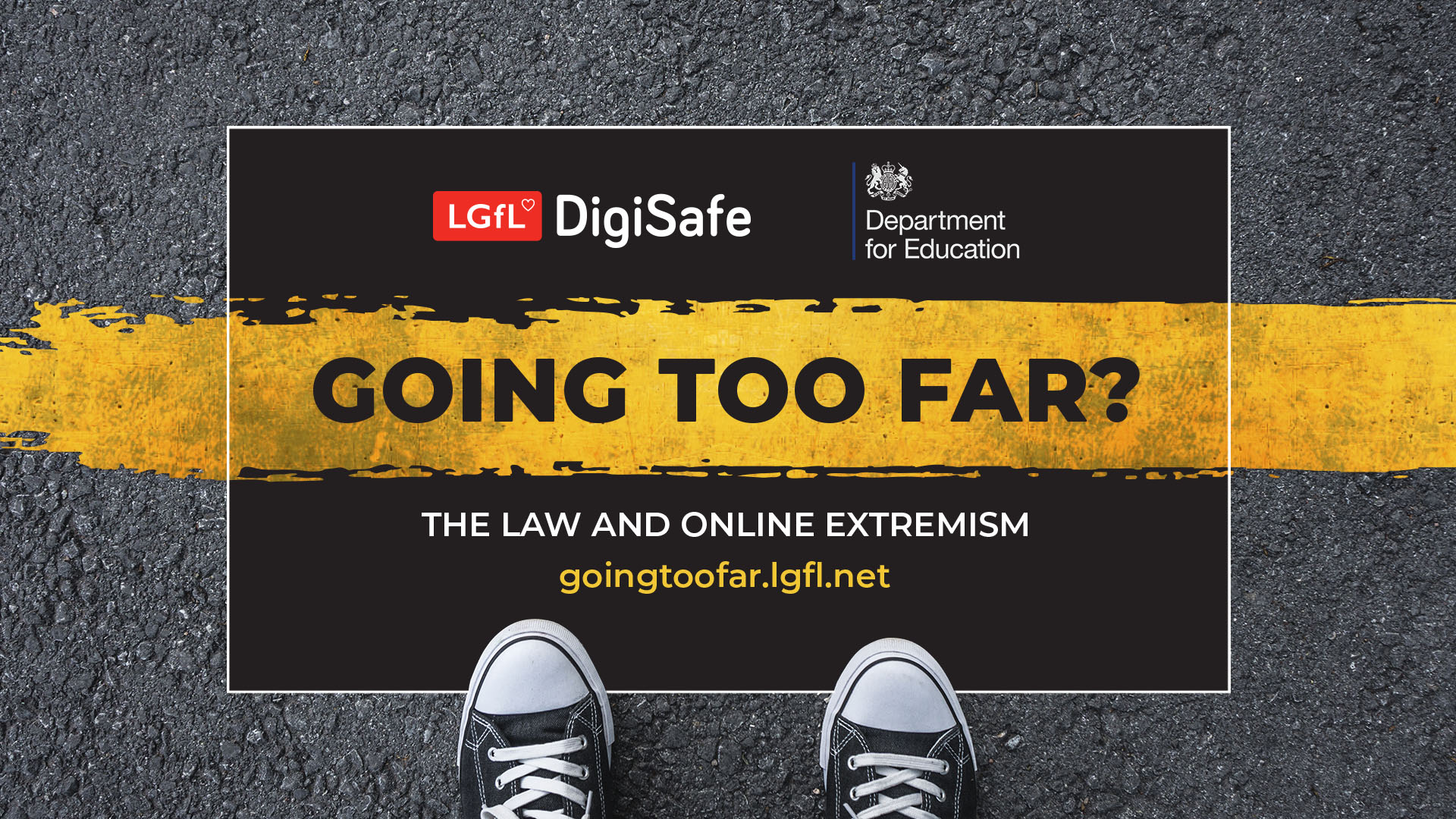By Mubina Asaria, London Grid for Learning
Amidst increasing reports of extremist content online during the pandemic [1], and a recent Ofcom study showing that 20% of child gamers chat to strangers [2], it is vital that young people understand the law and are clear about the risks, and their responsibilities online. Going Too Far? is a new resource jointly developed by the Department for Education and London Grid for Learning to help teachers promote critical thinking and build resilience to extremism.
This blog post will look at how teachers can make the most of this new resource to help their students build resilience to extremism and online harms.
Practical classroom implementation:
Using recent case studies with built-in discussion points, the interactive resource helps young people explore the techniques used by extremists and evaluate digital content across multiple platforms so they can make positive choices about who and what is trustworthy online; challenge extremist narratives and consider the consequences of their actions.
The resource is divided into 4 sections and designed to be teacher-led with engaging video and on-screen activities that lead into full-class and small-group activities. Aimed at secondary students, it is also suitable for transition year groups with elements easily adaptable for primaries, containing activities designed to facilitate discussion at multiple ages and developmental stages. A secondary teacher we trialled the resource with explained:
“The content of the lesson is so effective that you could have run exactly the same lesson that we did with Year 8 with 18 year-olds and had just as effective as response, without changing the exercises.”
Full teacher notes complement the multimedia scenarios to ensure that experienced and new teachers alike can deliver engaging and informative lessons, with extension activities and a dedicated SEND and Inclusion area to facilitate differentiation.
Top Tip – Teachers can use the ‘pupil mode’ toggle on selected pages to remove teacher-related material and focus on the video explainers for classroom delivery or to signpost students to view content outside of lessons.
Approaching each section:
- Extreme or Not Extreme introduces extremism with a focus on the law. In a short video, the UK Prevent Coordinator helps students recognise examples of extremist behaviour online and their legal implications. This is followed by three video scenarios of grooming on gaming platforms and chat apps with discussion stimuli.
- Believe It or Not? features an extremism and cybercrime expert exploring techniques used online for persuasion and how to report concerns. This is followed by a PowerPoint lesson with activities exploring disinformation, misinformation and fake news.
- The Case Studies section explores real-life examples of young people tricked and groomed into extremism and the role of social media, highlighting how easy it is to be lured into dangerous activities when others exploit your vulnerabilities.
- Taking a Stand includes expert talking heads highlighting reporting tools and ways to get help. This is complemented by a PowerPoint lesson including a scenario-based quiz with “What would you do if…?” questions to promote discussion around risk, reflect on how to challenge hate speech and stereotypes and the implications for victims, perpetrators and bystanders.
Top Tip – Teachers can run the PowerPoint lessons with quizzes and discussion alone or in sequence with the talking head videos, and use the teacher toggle to watch video explainers to clarify difficult concepts.
How relevant is it for pupils?
Teaching Online Safety in School advocates the importance of teaching pupils about the “underpinning knowledge and behaviours to navigate the online world safely and confidently regardless of the device, platform or app” which can change over time. According to a secondary school PSHE Lead:
“the impact on the students in the class was stark – in the middle of a lesson on extremism via gaming, lots of them realised they had actually been targeted already.”
Top Tip – it can be daunting to ask for help or know how to report concerns, so allow time to familiarise students with the ‘Getting Help’ where they can access support from trusted individuals and organisations. You could also add it to their contact books.
Supporting a cross-curricular and whole school approach:
As well as supporting a school’s Prevent duty, ‘Going Too Far?’ has cross-curricular relevance, teaching critical life skills to keep children and young people to safe in line with RSHE guidance, Keeping Children Safe in Education, and statements in the UKCIS Education for a Connected World framework. Activities can be customised and used as standalone lessons across subjects or incorporated into existing plans for assemblies, circle-time or ‘drop-down/off-timetable’ days. Some teachers have also suggested showing the videos to parents to help raise awareness.
Top Tip – Why not schedule some of the activities for an assembly for National Hate Crime Awareness Week (Oct), Anti Bullying Week (Nov) and Safer Internet Day (Feb), and invite your safeguarding and parent governor to attend?
We would love to hear your feedback and experiences – contact Mubina Asaria at safeguarding@lgfl.net.
Next steps: Visit the Going Too Far? webpage.
Take a look at statutory guidance Keeping Children Safe in Education, and visit the Education for a Connected World framework for guidance on the digital knowledge and skills that young people should have the opportunity to develop at different ages and stages of their lives.
[1] How hateful extremists are exploiting the pandemic, Commission for Countering Extremism.

